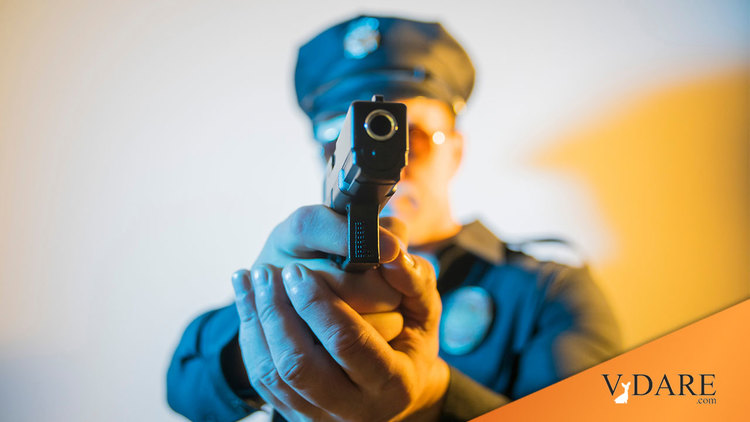From a study of 15 years of Officer Involved Shootings by the Dallas Police Department. To simplify things, these are only one-on-one incidents: one cop firing at one suspect.
Donner and Popovich consider these results to be of significance:
Incident-level accuracy. Among all 149 shootings studied, officers struck the suspect “with at least one round 54% of the time.” There was some fluctuation from year to year, but the overall prevailing trend was about a 50/50 split between hits and misses—“not very accurate,” the researchers note.
Bullet-level accuracy. Here, officers fired 354 rounds at suspects. Half the officers “were entirely inaccurate,” including one who fired 23 misses! Overall, about one-third (35%) of all officers’ rounds hit the targeted suspect. Most of those who had “perfect marksmanship” fired only one round.
No information was recorded on if any of those 65% missed shots happened to hit somebody walking the dog in the background.
Other variables. “Virtually all the incidents involved male suspects and male officers,” the researchers report. “Almost one-fifth involved white suspects and just under half involved white officers.” Two-thirds of the shootings occurred during the evening or overnight. Fellow officers who did not shoot were present with the shooting officer in 70% of the incidents. And in about four-fifths of the shootings, the suspect had a weapon and displayed/used it.
Only a few of these factors appeared to correlate clearly with accuracy or inaccuracy, the researchers found. For example:
“Black suspects were significantly less likely to be hit than white subjects;”
Black suspects tended perhaps to be trying to get away, while white suicide-by-cop suspects were standing still?
“[N]on-white officers were less likely to be accurate”;
“Incidents that took place during daylight hours were [significantly] more likely to result in the suspect being hit” (likely related to better “visual acuity”);
“[O]fficers were more accurate when shooting at unarmed suspects.”
From Stephen Hunter’s 2005 book American Gunfight, about the 40-second gun battle in 1950 in front of Blair House, Harry Truman's temporay residence, between Puerto Rican nationalist terrorists and Secret Service and local cop defenders of the President:
Physiologically, the fighters have entered a zone that cannot be duplicated by man. It has to be real for you to get there: you feel nothing, you see only a little bit of what’s ahead of you, you hear nothing. “Auditory exclusion” it’s called: your hearing closes down. Meanwhile your fingers inflate like sausages and your IQ drops stunningly.













